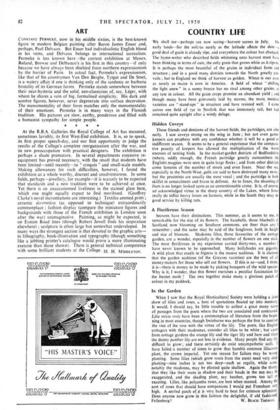In the Garden When I saw that the Royal Horticultural
Society were holding a joint show of lilies and roses, a host of quotations floated up into memory. It would, I should say, be little trouble to collect a great many score of passages from the poets where the two are associated and contrasted. Lilia mizta rosis have been a commonplace of literature from the begin- ning in most countries, though Swinburne was perhaps the first to contrast the vice of the rose with the virtue of the lily. The poets, like English cottagers with their madonnas, consider all lilies to be white ; but apad from cottage gardens the orange lily and the tiger lily and here and there the dainty panther lily are not less in evidence. Many people find any lily difficult to grow ; and there certainly do exist unsympathetic soils. I have failed a number of times to grow that humble common filiaceous plant, the crown imperial. Yet one reason for failure may be wrong planting. Some lilies (which grow roots from the stem) need very deep planting—nine inches is not too deep—such as regalis, while some, notably the madonna, may be planted quite shallow. Again the theory that they like their roots in shadow and their heads in the sun may be exaggerated, and the shading plant, say heather, grows too tall or exacting. Lilies, like polyantha roses, are best when massed. Among the sort of roses that should have companions I would put Frensham very high. A serried patch of jt is very hard to beat for crimson splendour. Does anyone now grow in this fashion the delightful, if old fashioned


































 Previous page
Previous page